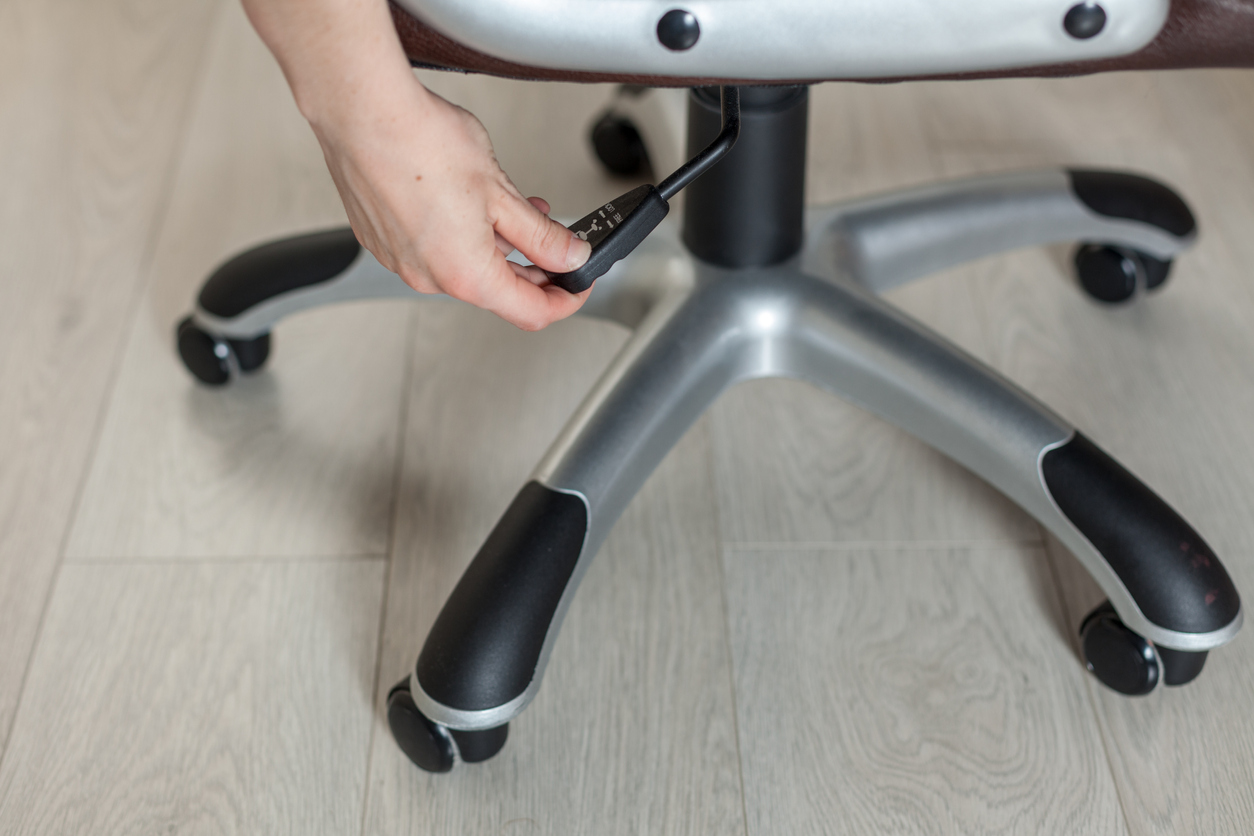Whether you're in an office or working from home, you may have felt back pain caused by sitting at a computer for a long time.
But your workstation setup can help you prevent or manage back pain, making it important to choose your seat wisely.
There are many different types of office chair. For example, some have inbuilt lumbar support while others feature portable supports. You need to choose the best one for the position in which you spend most of your day.
Your employer might also be able to help you improve the ergonomics (making things more appropriate for working).
Why office chair choice matters for back pain
The right chair for desk work can improve comfort, physical health and even work performance.
How you sit – also called your 'posture' – doesn't just affect how comfortable you feel. Bad posture can cause problems in your wrist, arm and shoulder muscles, and bones. So it won’t come as a surprise that office chairs must meet a minimum standard by law in some countries, such as the UK.
Back support from a good office chair can encourage good posture, which can help with back pain.

Key requirements for a good office chair
Different workstations help with different needs, but there are some basic requirements your office chair should meet:
- it should be stable – a chair with 5 legs in a star shape is usually stable
- it should allow you freedom of movement and a comfortable seat
- the height and back must be adjustable, and the back should be able to tilt
- the height should be adjustable so your eyes are level with the top of your computer screen
Pay attention to how you’re sitting to check if your chair is correctly adjusted.
You should be comfortable, with your thighs at right angles to the rest of your body, or slightly sloping. Your feet should be on the floor, supporting your back – you can use a footrest if that’s more comfortable.
Remember that a good chair isn’t a substitute for staying active, so you should be regularly changing positions and stretching. Your body isn’t designed to sit for long periods, so it’s important to get up and move around every 20 minutes.
Choosing the right office chair for your needs
Think about how you will be using the chair, as everyone has different needs. For example, some chairs encourage movement, while others provide more specific support to your lower back.
It's a good idea to make sure that your chair provides support in the right place for you. It should have adjustable arms so you can relax your shoulders and you should be able to place your feet firmly on the ground.
There are many chairs available on the market in various price ranges. Some examples of ergonomic seating include the made-to-order Corrigo Diffusion Ergonomic Chair and the budget-friendly Homeworker Ergonomic Office Chair.

Use your core with active seating
Many new chair models have been developed to promote what’s called an 'active posture'.
These chairs allow for small movements of the spine in different directions. This means that you’re using your core (the muscles that support the middle of your body) to keep yourself stable as you sit in them.
The Varier Move Stool is a good example, ticking many boxes with comfort, posture improvement, versatility and easy assembly.
Backless kneeling chairs are another type of active seating, forcing core muscles to work to stay upright. The Wing Balans Kneeling Chair is an option that allows your spine to find its natural curve, creating a balanced torso and strengthening the back muscles.
A standing desk could help with your posture
A standing desk could reduce your risk of developing shoulder or back pain.
But it’s worth taking a break from standing every 30 minutes at first to keep your legs and feet from becoming sore, as well as using a cushioned mat.
You might want to try a standing desk out before committing to buying one – you can do this by placing your laptop on a high counter or ironing board.
If you're ready to invest in a standing option, the ApexDesk Elite Series 60" W Electric Height Adjustable Standing Desk is a good starting point. It has an ergonomically curved front and electric height adjustment option.
Key points
- sitting at a computer for long periods of time can cause back pain, so remember to move about every 20 or 30 minutes
- an uncomfortable position, poor posture and muscular tension can all lead to back pain
- support from a good chair can reduce muscle aches, pains and stresses and make you more comfortable and productive
- think about what position you'll be working in for most of your day when choosing a chair






